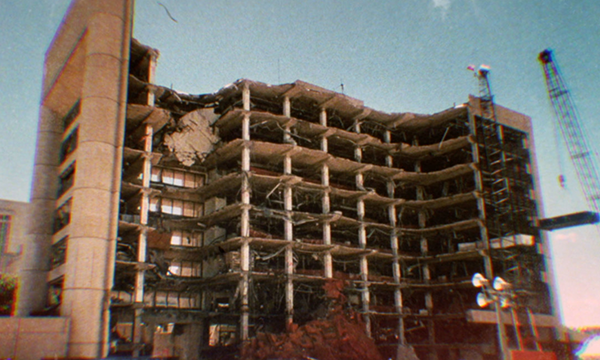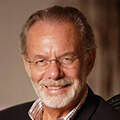The tragedy of the Oklahoma City Bombing is an event that’s etched into the minds and hearts of Oklahomans. That fateful Wednesday morning doubtlessly changed the lives of countless families forever, but from this horrible moment sprang strength, courage, and a unifying effort of love and compassion that’s equally unforgettable.
With history and the voices of those who lived it as our teachers, let’s learn about the history, motivations, and effects of the Oklahoma City Bombing together. And with this knowledge, we’ll gain a deeper understanding and appreciation for the indomitable courage and strength it took for Oklahoma City, the state, and the United States itself to work together and build back stronger.
What was the Oklahoma City Bombing?
“The Oklahoma City Bombing” is the name of the bombing that took place in the Alfred P. Murrah Federal Building in Oklahoma City, Oklahoma at 9:02 AM on Wednesday, April 19th, 1995.
The blast and its ripple effect caused more than $650 million dollars (USD) in damages to nearby businesses, buildings, vehicles, and infrastructure. Claiming the lives of nearly 170 people and injuring nearly 700 more, the bombing is the deadliest single act of domestic terrorism in the United States.
“... When it went off, I was at my desk, and the whole place went boom, boom. We got up and could see the smoke and stuff. Then we walked up there, my partner and I. We got there, just a real crumbled mess.”
— Bob & Diane Borlase, Bob worked for the Sheriff's office at the time of the bombing
Chapter 9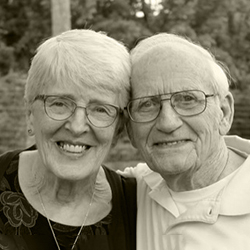
Who Perpetrated the Oklahoma City Bombing and Why?
The Oklahoma City Bombing was a domestic terrorist attack carried out by Terry Nichols and Timothy McVeigh, the latter of which became the more popularized name and face of the attack.
Both Nichols and McVeigh were former members of the U.S. Army. During their time together, they both shared their thoughts of resentment for the United States government. This relationship — centered on their hatred for the government — grew stronger over time, with Nichols eventually inviting McVeigh to live with him on his Michigan farm after McVeigh’s discharge from the armed forces.
In the years that followed, the two men continued to steep themselves in anti-government rhetoric, with Nichols even seeking to renounce his citizenship from the United States entirely, claiming himself a sovereign citizen that was separate from the country and its laws.
Together, their interest in highly-destructive weaponry grew. Led by Nichols, the two men experimented with bombs and other advanced forms of weaponry, eventually leading them to form a small business selling military surplus at gun shows.
“He [Tim McVeigh] did refer to himself as a terrorist. He explained that he thought it [the bombing] was justified.”
— Stephen Jones, Attorney for Tim McVeigh
Chapter 15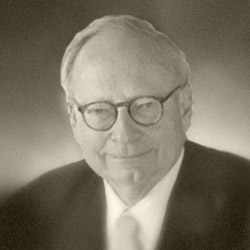
It was in this period of living and working together that Nichols and McVeigh watched the televised raid on the Branch Davidian compound in Waco, Texas. The Branch Davidians, an apocalyptic religion that cut itself off from the rest of the world — much like Nichols and McVeigh — claimed their isolationism and radical beliefs that endangered men, women, and children alike were in an effort to prepare for the end of the world.
Nichols and McVeigh watched in fury as the 51-day standoff between the Branch Davidians and the Bureau of Alcohol, Tobacco, Firearms and Explosives (ATF) came to a violent end. The ATF, having lost 4 agents to the gunfire and seeking to aid the abused women and children inside, finally laid deadly siege to the compound, killing their fanatical leader, David Koresh.
Sharing much of the same worldview as Koresh and the Branch Davidians, Nichols and McVeigh erupted in outrage, seeing the siege — in their twisted worldview — as the final overreach of the federal government.
Brewing in years of hateful isolation, fueled by radical anti-government rhetoric, and ignited by the siege of the Branch Davidian compound, Nichols and McVeigh began to set their plans for revenge in motion.
These plans, which took a little over a year from the viewing of the siege, ultimately culminated in the terroristic bombing of the Alfred P. Murrah building in Oklahoma City, OK.
How Did the Bombing Affect Oklahoma City, the State, and the USA?
As the blast erupted in downtown — felt and heard by people over 55 miles away — the first and most immediate effect was felt: confusion and horror.
“All of the sudden, there was a concussion. You could feel something had happened…”
— Frank Keating, Former Governor of Oklahoma
Chapter 16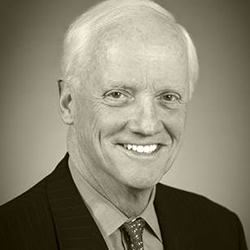
Though shaken by the carnage, first responders were on the scene within minutes, keeping onlookers from danger and immediately working to clear rubble and save as many lives as possible.
At the local level, then-Mayor Ron Norick — attending a local prayer breakfast just prior to the bombing — was quickly contacted to keep him abreast of the situation. Police and security personnel swept in, taking Mayor Norick to safety while the threat of follow-up attacks was being assessed.
“And they said, 'Okay, we’ll send the police to get you.' By then they’d closed off I-40 and they’d closed off all the roads, the Police had. So they ran two detectives out here and got me in a car...”
— Ron Norick, Former Mayor of Oklahoma City
Chapter 14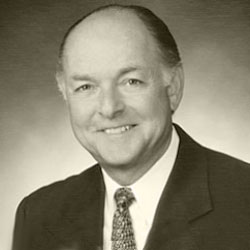
Then-Governor Frank Keating, who was also at the same prayer breakfast as Mayor Norick, was alerted to the blast as well, with similar protocols to ensure safety being immediately activated. While temporarily housed in an emergency safety bunker, Governor Keating began coordinating rescue and safety efforts in Oklahoma City as well as enacting contingency plans in the event of potential subsequent terrorist activity within the state.
Nationally, the news swept the airwaves as the story of the bombing began to break. President Bill Clinton contacted Governor Keating, a longtime friend, with a simple question after the bombing: “What do you need?”
Governor Keating, knowing that emergency resources would be stretched thin in the response to the attack, told him: “Oklahoma City has about a thousand firefighters and we’re probably going to need a lot of help here.”
“I’ll take care of it,” was the response, and national aid began pouring into Oklahoma City almost immediately.
The next morning, many city and state officials and authorities joined first responders, valiantly who came in from all across Oklahoma and other parts of the country to lend their aid. With the smoke and rubble beginning to clear, another immediate effect of the bombing became clear: This act of terrorism severely traumatized victims, citizen, and first responders alike.
“And this I don’t think has ever been publicly said, but this guy was not an Oklahoma City firefighter. He had a different color outfit and so I stepped out on him and I said, ‘Thank you for being here.’
He said, ‘Who are you?’
And I said, ‘I’m the governor of Oklahoma.’
... He stopped and he took his finger and stuck in my chest and he said, ‘Well, you find out who did this because the only thing I pulled from that building were a child’s finger and an American flag.’”
— Frank Keating, Former Governor of Oklahoma
Chapter 16
In the blink of an eye, Oklahoma City, the state of Oklahoma, and the United States itself was wounded and bewildered. But, despite the pain and suffering inflicted upon the people and its leadership, heroes arose and immediately sprang into action, creating an outpouring of support and compassion like never before.
How Did Oklahoma City Begin to Recover After the Bombing?
Healing and rebuilding came in many forms for Oklahoma City, the state, and the nation: justice, resources and financial aid, and international support.
Justice, thankfully, was swift and arrived unrelentingly for Timothy McVeigh — who was the one that physically detonated the bomb — and Terry Nichols.
Driving on Interstate 35, McVeigh was stopped near Perry, Oklahoma by a state trooper for a missing license plate. Upon stopping the vehicle, the trooper, Charles J. Hanger, took quick notice of McVeigh’s gun and swiftly brought McVeigh into custody on charges of driving without a license plate and possession of an illegal firearm.
Soon thereafter, using a VIN number on a charred truck axle found at the site of the bombing, McVeigh was connected back to the rental truck he had used to store and detonate the explosive used in the attack.
“And here was this big piece of metal with a number on it.
I said, ‘Look at that.’ Somebody had spray-painted around it and I said, ‘There’s a number, we’ll get who’s responsible.’ But, of course, mercifully we did, very quickly.”
— Frank Keating, Former Governor of Oklahoma
Chapter 16
Nichols, McVeigh’s accomplice in the planning of the attack, soon turned himself in after it became clear he was one of the targets of a national manhunt.
In addition to the justice quickly served by law enforcement, recovery also took the form of donations which flooded in from across the world to support the people of Oklahoma City.
“We started getting donations in immediately … from all over the world. The first telegram I got was from Israel. We had school kids sending in pennies and people sending in checks...”
— Ron Norick, Former Mayor of Oklahoma City
Chapter 16
Money, food, clothing — you name it. If the people of Oklahoma City, its leadership, or the first responders needed it, everyone from school children to foreign nations were sending as much aid as they could spare to meet those needs.
The 24-hour news coverage of bombing and its aftermath also shined a spotlight on the ongoing efforts of the rescue workers, recovery teams, and other first responders who showed the world the resilience of the people of Oklahoma City and the heroes supporting their efforts.
The swift justice by vigilant law enforcement, the poise and command shown by Oklahoma leadership, and the coordinated efforts of the international community to rally aid to Oklahoma City were — without question — the balm that began to heal the heart of Oklahoma.
What is the Lasting Impact of the Oklahoma City Bombing Today?
Without question, the Oklahoma City bombing was one of the most tragic events in Oklahoma state history.
However, despite the pain and trauma it caused, Oklahoma City and the state didn’t just endure the pain; because from this horrible attack sprang hope, enduring strength, and sent a clear message to the world: “We’re Oklahoma Strong.”
Together, Oklahomans gleaned the lessons the tragedy taught us, rebuilt stronger, and purposed ourselves to never forget those we lost.
Nowhere better is this strength and remembrance embodied than in the Oklahoma City National Memorial Museum. The memorial museum, commissioned by former Mayor Norick, was the keystone project of the special task force charged with creating a permanent memorial that would be built where the Murrah building formerly stood.
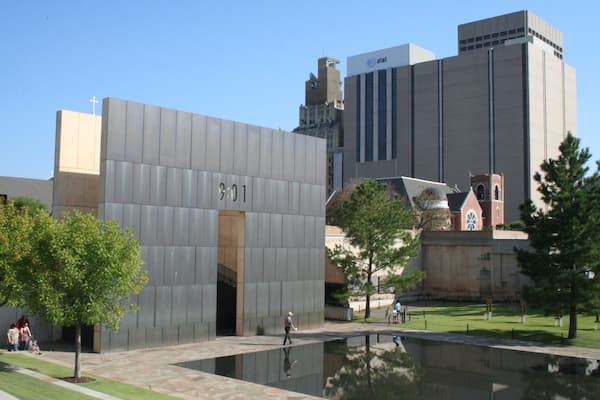
Featuring solemn displays that honor the lives lost, such as the Survivors’ Wall, the Field of Empty Chairs — where one chair stands for each of the 168 lives lost — and the breathtaking Gates of Time, the memorials here keep the memories of those lost alive within the spirit of every visitor.
Moreover, future generations of Oklahomans and those the world over are taught a powerful lesson by the events of the Oklahoma City bombings: Though terrible things may happen, good people — who are courageous, who care, and who help without thought for themselves — abound. And, together, they —we— are far stronger than anyone who would seek to cause lasting harm.

